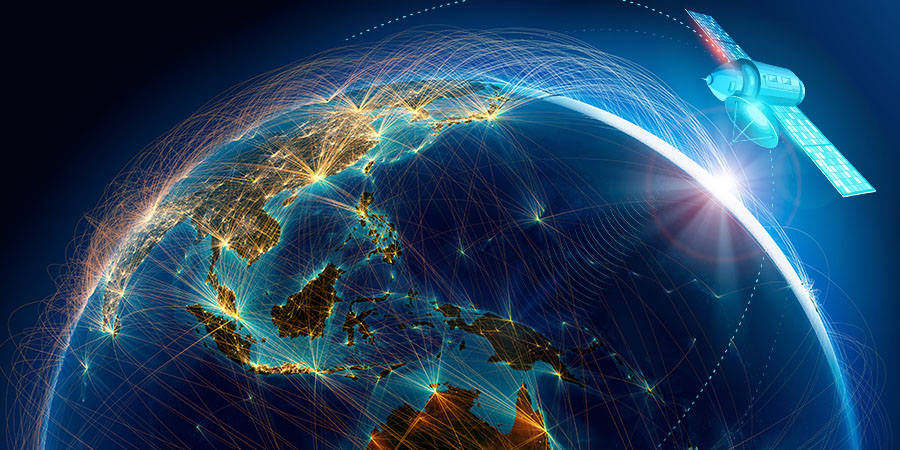Satellite communication is transforming connectivity across the Asia-Pacific region by bridging geographical barriers and connecting diverse communities. The expansion of satellite coverage has allowed previously isolated countries to share information instantly, bringing essential resources and opportunities to remote areas.
The cost of satellite services is decreasing, making it accessible to smaller organizations and consumers. Satellites also facilitate regional cooperation, offer support in times of disasters, and foster connections between isolated communities. Satellite connectivity empowers communities by providing access to information and services that improve education, healthcare, agriculture, and more, unlocking new possibilities for progress and development.
Key Players Driving Innovation in Satellite Tech
Several key players are at the forefront of driving innovation in satellite technology across the Asia-Pacific region. Private companies, non-profits, and government agencies are collaborating to increase access to information and open new opportunities for collaboration. Space agencies are reducing launch costs, enabling smaller companies to launch satellites.
Businesses: Businesses are providing affordable high-speed internet to remote areas via satellite. Non-profit organizations such as the Asia-Pacific Satellite Communications Council (APSCC) and the Asia-Pacific Regional Space Agency Forum (APRSAF) are promoting cooperation on satellite projects.
Government: Governments in the Asia-Pacific region are actively investing in satellite infrastructure and partnerships. Initiatives such as the Asia-Africa satellite communications and applications training center are helping countries develop expertise in satellite technology. The Asian Development Bank is funding satellite communication initiatives, which contribute to improving connectivity in the Pacific.
Agriculture: In agriculture, farmers in remote areas now have access to satellite data that provides insights into weather, soil conditions, and the spread of pests or disease. This precision agriculture maximizes efficiency and production, leading to improved crop yields and livestock management.
Telemedicine: Satellite connectivity facilitates virtual consultations and even surgeries, allowing doctors to connect with patients in isolated communities. Medical scans and test results can be transmitted between healthcare facilities, eliminating the need for patients to travel long distances for medical care.
Education: Interactive satellite broadcasts support distance learning, teacher training, and educational programs across the region. Students in remote schools gain access to lessons from expert teachers, addressing challenges such as teacher shortages in rural areas. Satellite technology enables the sharing of educational content across borders.
Disaster Management: Satellites play a crucial role in predicting and responding to disasters such as floods, earthquakes, tsunamis, and cyclones. Satellite imagery helps assess the scale of damage, facilitating coordinated relief efforts. Satellite phones provide a lifeline for communication when local infrastructure is disrupted, and early warning systems alert communities to evacuate.
These key players are working together to expand access to vital resources for millions of people in the region. Satellite communication technology is proving to have transformative applications across diverse industries in the Asia-Pacific region, facilitating connectivity that transcends geographical borders.
Overcoming Regulatory and Infrastructure Challenges
In order to fully realize the potential of satellite communication in Asia and the Pacific, there are several challenges that need to be overcome. Strict regulations around satellite technology, imposed by some governments due to security or control concerns, need to be relaxed to encourage growth in the sector.
Limited ground infrastructure, especially in remote or island communities, hinders the full utilization of satellite services. Investing in more ground stations, data centers, and improvements in terrestrial infrastructure like fiber optic cables and cell towers can extend the reach of satellite networks. The high costs of building, launching, and operating satellites are a barrier for some countries and communities.
Partnerships between governments, private companies, and development organizations could help fund satellite programs, subsidize access for underserved groups, and lower costs over time. Additionally, some countries lack the technical knowledge and skills to develop and manage satellite technology independently. Education and training programs focused on space science, engineering, and policy can help build a talent pipeline, and collaboration with international experts allows for knowledge transfer.
Looking ahead, the future of satellite communication in the Asia-Pacific region appears to be promising. Expanded connectivity, new applications, private sector growth, and cross-border collaboration are anticipated. The technology is set to bridge digital divides, foster innovation, and improve lives, building a more connected and enriched world across countries and continents.







